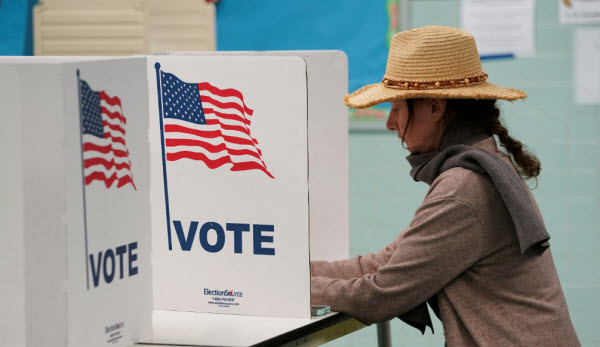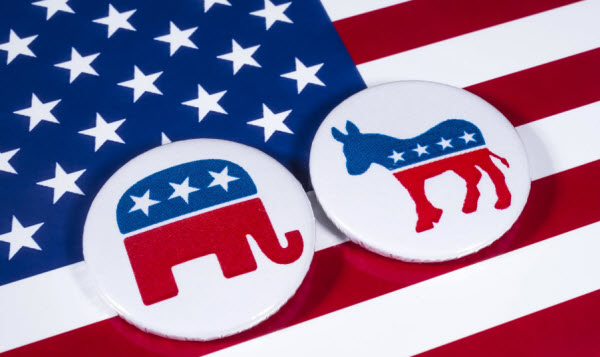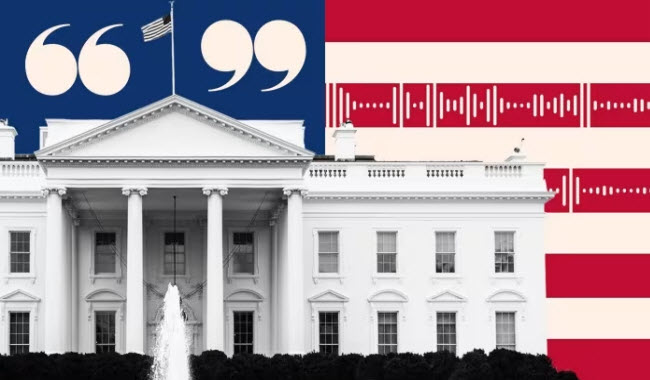The American presidential elections are a pivotal event within the country’s democratic system, playing a crucial role in shaping future policies and directions. Every four years, American citizens head to the polls to elect their next president, marking a moment that transcends mere democratic practice and significantly impacts both domestic and international policies.
The Local Importance of American Elections
The U.S. presidential elections provide citizens with an opportunity to directly influence issues affecting their daily lives. By electing the president, voters decide on policies related to the economy, education, healthcare, and taxes. For instance:
- Economic Policies: Decisions regarding taxes, market regulation, economic stimulus programs, and unemployment reduction are made based on the elected president’s vision. This can impact the development of economic stimulus programs and strategies to bridge economic gaps among different social groups.
- Education and Healthcare: Election campaigns often propose specific programs to enhance the quality of education and healthcare, including funding for schools and hospitals, expanding health insurance, and promoting equality in access to essential services.
- Taxes and Regulations: The elected president sets tax policies and shapes laws related to business and financial markets, directly affecting individuals’ and companies’ ability to achieve their economic goals.
The International Significance of American Elections

Beyond their domestic impact, U.S. presidential elections have significant implications for international politics. As the commander-in-chief and head of American diplomacy, the U.S. president influences foreign policy in various ways:
- Foreign Policy and International Relations: The elected president determines the direction of foreign policy, including relations with allies, managing international crises, and negotiating trade and political agreements. Changes in administration can lead to significant shifts in relationships with countries like China, Russia, and NATO members.
- National Security: The president makes decisions regarding national security, including defense strategies and counterterrorism measures. These decisions affect global security stability and international relations.
- Global Trade: The president’s trade policies impact the global economy, including tariffs and trade agreements. These policies can lead to changes in global supply chains and economic effects on other nations.
Impact of Elections on Global System Stability
U.S. presidential elections not only affect domestic and international policies but also contribute to the overall stability of the international system. The political choices made by the U.S. president influence global power balances and international cooperation in areas such as climate change, global health, and human rights.
History of American Elections

The U.S. presidential elections began in the late 18th century with the election of George Washington, the first President of the United States, in 1789. At that time, the electoral system was limited and varied from state to state, with indirect elections where voters chose delegates who, in turn, selected the president.
Early Electoral System
The Electoral College was established as part of the U.S. Constitution and consists of a group of electors representing the states who elect the president and vice president. Initially, each state had a number of electors proportional to its congressional representation.
Early Developments
In the first two decades of the United States, elections were indirect, with state legislatures choosing electors. Women and minorities did not have voting rights, and there were significant restrictions on who could participate in the electoral process.
The 19th Century: Expansion and Reforms
The 19th century saw significant changes in the U.S. electoral system with the evolution of democracy and human rights.
- Major Shifts: In the early 19th century, states began adopting direct voting systems for electors, allowing voters to participate directly in selecting presidential delegates, enhancing the inclusivity of the electoral system.
- Constitutional Amendments:
- 15th Amendment (1870): Granted voting rights regardless of race or color.
- 19th Amendment (1920): Granted voting rights to women, marking a significant turning point in U.S. election history.
- Campaign Evolution: In the 19th century, campaigns became more organized, using media such as newspapers and posters to promote candidates and their platforms.
The 20th Century: Further Developments and Challenges
The 20th century witnessed significant advancements in the electoral system, including major reforms addressing emerging challenges.
- Expansion of Voting Rights:
- 24th Amendment (1964): Prohibited poll taxes, which were used to disenfranchise the poor.
- Voting Rights Act (1965): Eliminated many barriers preventing minorities from voting.
- Technological Advancements: Technological developments led to changes in voting methods, including electronic voting machines and online registration, speeding up the process and reducing human error.
- Challenges: The 20th century faced challenges related to election security and transparency, leading to measures to ensure election integrity, including investigations into manipulation and fraud.
The 21st Century: Innovations and Challenges
In the modern era, U.S. presidential elections have continued to evolve with the introduction of more innovations and security measures.
- Security Enhancements: Advanced techniques have been introduced to ensure the security of the electoral process, including identity verification and anti-manipulation measures.
- Online Voting and Early Voting: With technological advances, some states have begun offering online voting and early voting options, providing voters with more flexibility.
- Contemporary Challenges: Current challenges include issues like gerrymandering, the potential effects of social media, and ensuring all voters have access to polling places.
The American Electoral System: Structure, System, and Voting Process

The American electoral system is one of the most complex in the world, combining fundamental democratic principles with intricate details reflecting the nature of American federalism and diversity. Here’s an overview of the basic structure and system of U.S. presidential elections, as well as details on the voting process from registration to actual voting.
Structure and System: Explaining the Presidential Election System
- The Electoral College: One of the key elements of the American electoral system is the Electoral College, a unique system distinguishing U.S. presidential elections from other democratic systems. Here’s how it works:
- Composition: The Electoral College consists of 538 electors, with each state allocated a number of electors based on its congressional representation (Senators + Representatives). For example, California has the largest number of electors (55) due to its large population, while smaller states like Vermont and Wyoming have only 3 electors each.
- Voting: American voters choose the president and vice president through a general election held every four years. Electors are chosen based on the results in each state, with most states using a winner-takes-all system, where the candidate with the majority of votes in a state gets all of its electoral votes, except in Maine and Nebraska, where electoral votes are distributed proportionally.
- Declaring the Winner: To win the presidency, a candidate must secure a majority of the Electoral College votes, i.e., 270 out of 538. If no candidate achieves a majority, the president is chosen by the House of Representatives.
- Primaries and Caucuses: These are the stages where each party selects its official candidates, beginning before the general election:
- Primaries: Typically conducted as voting events similar to the general election where voters select their preferred party candidate.
- Caucuses: Held in some states, where voters gather to choose delegates who will vote for the candidate at the party’s convention.
Voting Distribution
Understanding voting distribution is essential for interpreting election results, as votes are distributed based on state outcomes:
- Swing States: Swing states (e.g., Florida, Pennsylvania, Michigan) play a critical role in determining the winner, as the vote margins in these states can be narrow.
- Major States: States with large populations, like California and Texas, contribute a significant number of electoral votes, heavily influencing the final election results.
Details of the Voting Process
- Voter Registration: The first step in voting involves registration, which varies by state:
- Requirements: Voters must be U.S. citizens, at least 18 years old, and residents of the state where they wish to vote.
- Registration Process: Voters can register online, by mail, or in person at voter registration offices. Some states also offer registration at motor vehicle departments or other government offices.
- Deadlines: Registration deadlines differ by state, and individuals must ensure they are registered in time to avoid issues on Election Day.
- Voting Methods: The U.S. provides various voting methods to accommodate different needs:
- In-Person Voting: Conducted at polling stations on Election Day, using paper ballots or electronic voting machines.
- Mail-In Voting: Voters can request mail-in ballots if unable to vote in person, fill them out, and return them by mail before the deadline.
- Early Voting: Available in many states, allowing voters to cast their ballots before Election Day.
- Absentee Voting: Available for those who cannot vote in person due to travel or special circumstances, requiring an absentee ballot request.
Political Parties in the American Presidential Elections

The U.S. presidential elections feature a variety of parties reflecting a range of ideas and principles. This includes major parties like the Republican and Democratic parties, as well as smaller and independent parties.
The Republican Party
- History: Founded in 1854 in response to the expansion of slavery, the party’s primary goal was to halt slavery’s spread. Abraham Lincoln, the party’s 1860 candidate, played a crucial role in ending slavery.
- Principles: Advocates for free markets, limited government intervention, and traditional family values.
- Notable Figures: Abraham Lincoln, Richard Nixon, and Ronald Reagan.
The Democratic Party
- History: Originating in the early 19th century, the Democratic Party has evolved from advocating for agrarian interests to supporting progressive social and economic reforms.
- Principles: Emphasizes social justice, environmental protection, and government intervention in economic matters.
- Notable Figures: Franklin D. Roosevelt, John F. Kennedy, and Barack Obama.
Third Parties
- Libertarian Party: Promotes minimal government intervention in personal and economic matters.
- Green Party: Focuses on environmental issues and social justice.
- Other Independent Candidates: Various other candidates and parties emerge during elections, offering alternative platforms and viewpoints.
Controversies and Challenges
The American electoral process faces ongoing challenges and controversies that impact election integrity and public trust.
- Voter Fraud: Despite claims, instances of widespread voter fraud are rare, but concerns persist about election security.
- Gerrymandering: The manipulation of electoral district boundaries to favor one party can distort representation and influence election outcomes.
- Election Interference: The potential for foreign interference in elections through cyberattacks and misinformation campaigns remains a significant concern.
Future Directions and Innovations
The future of American presidential elections will likely continue evolving with advancements in technology and changes in societal norms.
- Technological Advances: Continued improvements in voting technology and security measures are expected to enhance the electoral process and address challenges.
- Electoral Reforms: Discussions around electoral reforms, including changes to the Electoral College system and efforts to ensure fair and transparent elections, will likely shape future elections.
